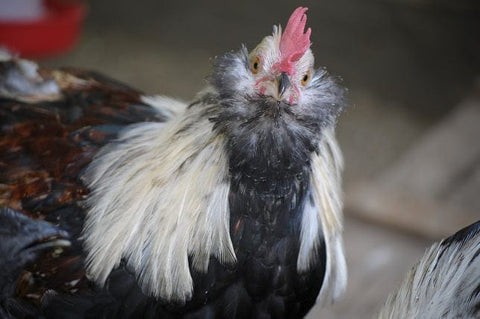The rooster’s crow is a familiar sound, especially in rural areas. But why do roosters crow, particularly in the morning? While often associated with sunrise, there’s more to this behavior than meets the eye. This article delves into the science and myths surrounding rooster crowing.
The Rooster’s Role: More Than Just Crowing
Roosters play vital roles in a flock. They are protectors, defending hens from predators; reproducers, ensuring flock continuation; and leaders, maintaining order and social cohesion. Crowing is a crucial communication tool in each of these roles.
Leadership and Social Harmony
Roosters establish and maintain a pecking order, minimizing conflict and ensuring flock stability. They intervene in disputes, protect vulnerable hens, and facilitate the integration of new members. A rooster’s presence can significantly reduce stress within the flock, leading to improved health and productivity. When free-ranging, a rooster keeps the flock together, guides them to safe areas, and ensures their return to the coop at night.
Guardian of the Flock
Roosters are instinctively protective. They will confront predators, sometimes even sacrificing themselves to defend their hens. While often thought of as a warning signal, crowing is more of a preventative measure, announcing the rooster’s presence and deterring potential threats. A rooster’s vigilance provides a sense of security for the hens, allowing them to forage and socialize without constant fear.
Deciphering the Rooster’s Crow
Roosters crow for various reasons:
- Communication: To signal safety, locate stray hens, and coordinate flock movements.
- Territoriality: To announce their presence and warn off rival roosters.
- Dominance: To establish and maintain their position within the flock.
- Warning: To alert the flock to imminent danger with a distinct, urgent call.
The Morning Chorus: Why Roosters Crow at Dawn
The most common time for rooster crowing is at dawn. This is primarily due to their internal biological clock, or circadian rhythm, regulated by the pineal gland. This gland senses light and triggers behaviors like crowing in response to changing light levels. Roosters anticipate sunrise, crowing just before dawn as their internal clock aligns with the approaching daylight. The dominant rooster typically crows first, followed by subordinate roosters. This morning chorus reinforces territorial claims and establishes dominance within and between flocks.
Crowing Throughout the Day: More Than Just Sunrise
Roosters crow throughout the day, not just in the morning. Crowing frequency is influenced by various factors including light levels, daily routines, the presence of other roosters, triggering noises, and seasonal changes. Increased crowing often occurs in the morning and evening, coinciding with peak testosterone levels. Young roosters and those in multi-rooster flocks tend to crow more frequently. External stimuli like car noises or sudden movements can also trigger crowing.
Debunking Rooster Crowing Myths
Several myths surround rooster crowing:
- Myth: Roosters only crow at dawn. Reality: Roosters crow throughout the day and sometimes at night.
- Myth: Roosters crow for no reason. Reality: Crowing is a form of communication with specific purposes.
- Myth: Crowing indicates aggression. Reality: While crowing can be a warning, it’s not always a sign of aggression. All roosters crow, regardless of temperament.
Conclusion
The rooster’s crow, a complex and multifaceted behavior, is essential for flock dynamics and survival. While the morning crow is iconic, understanding the various reasons behind this vocalization provides a deeper appreciation for the rooster’s role and the intricate communication within the avian world.
Source:
- Caughey, Melissa. How to Speak Chicken. Storey Publishing, 2017
